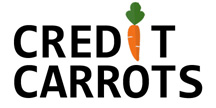What is a covered call ETF? It’s an exchange traded fund that sells covered call options to provide the fund owners with additional income. Most of these ETF’s will be focused on a specific sector such as technology, telecom, banking, utilities etc. The fund will generally own a large number of the top stocks in their sector, and also sell call options in the market.
A covered call ETF is a great investment to look into in a sideways market – meaning that the price of the market isn’t going up or down too much.
Here’s the thing to understand about covered call ETF’s. If the market takes off and rockets to the moon, then you will be missing out big time. However, if the market doesn’t go up much and doesn’t go down much, then you’re going to benefit from the income generated by the sale of these call options.
In order to get a good idea of how covered call ETF’s generate their income, we’ll need a quick lesson on call options.
What is a call option?
A call option is essentially a bet that a stock will go up in price.
Formally, call options are contracts that give the buyer the right, but not the obligation, to buy a security (stock, bond etc.) at a specific price before a specific date.
For example, let’s assume that the stock of Company X is trading at $10. You can buy a “call option” at $12 that expires in one month.
This means that if the price of the stock rises above $12 within the next month, then you will be able to buy that stock for $12 regardless of the current price. Let’s assume that the Reddit WallStreetBets group gets a hold of Company X’s stock and sends it to $100 a share. Since you have the call option at $12, you can buy the stock for $12 and then immediately sell it for $100.
If the stock does not hit $12 within the next month, then you lose the money that you put into buying the call option. As you can see, it really is gambling on the price of the stock.
What about the company that sold you the call option? If the price of Company X does hit $12, then they have to sell the actual stock to you if you choose to exercise your contract. This means that if the seller of the call option does not actually own any stock, then they will have to go out and buy the stock at the current price before they can sell it to you for $12 – which could be very painful if the price has increased dramatically.
A “covered call” simply means that the seller of the call option already owns the required stock. If the price of Company X goes over $12 and you want to use your option, then they will just sell you the stock that they already own – they don’t need to go out and buy it at the current market price.
How Does a Covered Call ETF Work?
So how does all of this work with a covered call ETF? The ETF basically does all the work for you in terms of picking the stocks and selling the call options. Let’s take a look at a real covered call ETF example to find out.
The example we’re going to take a look at is the QYLD NASDAQ 100 Covered Call ETF. This ETF owns stock in a bunch of companies such as Amazon, Apple, Microsoft, and Nvidia.
QYLD also sells covered call options on the stock that they own. By selling these covered call options, QYLD essentially limits its opportunity to make money from an increase in the price of the stocks.
This is because if the prices go up, then the call options that are sold will get exercised by the buyer of that option. This means that a portion of the price increase of the stock is enjoyed by the owner of the call option, and not the fund.
However, if the prices of the stock does not go up enough for the call option to be exercised, then the fund can just pocket the money that the buyer paid for the call option without having to give up any stock. The money is then distributed to the owners of the ETF.
If the prices of the underlying stocks in the ETF go down, then the fund price will still go down. Although the decrease in price is somewhat offset by the call option sales.
At the time that we wrote this article, QYLD is yielding about 10% annually. You’d be hard-pressed to find a dividend stock or REIT that has a yield this high. This is why some people like to buy covered call ETF’s.
Should You Buy a Covered Call ETF?
This is a question that only you can answer. Covered call strategies usually perform well in flat or slightly down markets, and underperform in markets with rapid price increases.
Do you want to trade potential price increases in the stock market for a high yield? Do you think the stock market will be trading sideways for a while? Is your portfolio diversified enough?
If you can answer those questions, then you will be able to decide whether a covered call ETF is right for your portfolio.
We are not financial advisors, and no content on this site should not be taken as financial advice. No guarantee can be made if you invest based on the information provided on this blog. We make no warranty of any kind regarding the blog and/or any content, data, materials, information, products or services provided on the blog.












Leave a Comment